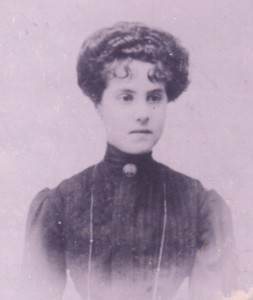The Granados Origins in Spain
|
|
| The following information
on the Granados family traces the American Granados family's
heritage back to its origins in Spain.
The information below was compiled by Luis Granados, II (aka "Sonny"), son of Luis Granados, grandson of Ramon Granados and Maria Concepcion Rey.
|
|
|
GRANADOS
| Main Page |
| First Generation |
| Cuento de Brujas |
| Coat of Arms |
| Spain |
| America |
| Riverdale |
| Recipes |
| Emigration Narrative |
| Family Index |
| Feedback Form |
 |
|
GRANADOS
Knights of this lineage served under King Alfonso X “The
Wise” in the conquest of Andalucia, especially in the recapture
of Jerez de la Frontera from the Moors in 1254, where Don Pedro
Fernandez Granados distinguished himself.
In reward, the King granted him hereditary titles and their
corresponding estates in Andalucia.
The name is mentioned many times in Los
Libros de Repartimientos de Tieras de la Conquistas de Andalucia,
and its nobililty is mentioned in Las
Ordenes de Santiago, Calatrava y San Juan de Jerusalem
and La
Real Maestranza de Seville. Some
of the family names turn up in odd places.
In 1517, Francisco Fernandez de Cordoba discovered the
Yucatan Peninsula in Mexico, and in 1540, Francisco Vasquez de
Coronado, a Spanish explorer, led an expedition into the American
Southwest in search of gold, and discovered the Pueblos of New
Mexico. His lieutenant,
Garcia Lopez de Cardenas, discovered the Grand Canyon. Luis
Granados-Rey claimed that the original Muñoz was a representative
of Caesar’s government in Rome.
Among other powers, he was authorized to mint money, and was
very good at it, so good that when the Roman soldiers invaded
England, they preferred to be paid in coins minted by Muñoz.
They called his coins munoz, a term which eventually became
money. The
oldest known ancestor was named Barrera, who married a woman named
Monsalves. They had two
sons, Pedro Barrera-Monsalves, who became a Catholic Priest, and
Manuel de San Agustare Barrera Monsalves Manuel
Barrera-Monsalves had two daughters, Isabel and Maria de los
Dolores. Maria
married a Granados-Gonzales, and they had a son, Ramon
Granados Barrera. Ramon
Granados married Dolores Fernandez-Dominguez, whose mother was
Catalina Dominguez. Their
sons were: Juan Nepomuceno, a Catholic Priest; and Luis. Granados-Fernandez
forebears held titles that included Count and duke.
The Duke’s palace in Seville was later converted into the
famous department store, Corte Ingles. When
Juan Nepomuceno Granados entered the priesthood, his aunt, Maria de
los Dolores Barrera, gave him properties known as El Pino, Pera
Mora, end of Aroche; Huestos Viejas, Cerro and Vinerias.
His will, dated January 1, 1912, bequeathed these
properties to St. Peter’s Priesthood.
Other properties included a chestnut orchard at Carrera del
Caballo, an olive grove at Dehera on the road to Cortelazos, a
vineyard at Dehera, and an olive grove at Rebollar.
Luis
Granados-Fernandez, who held a very important position in the
government of Huelva, married Maria del Rosario Marquez Muñoz,
daughter of Antonio Marquez Garcia and Carmen Muñoz Galvan, from
the province of Huelva. They
had four children: Luis, a lawyer; Ramon, born September 4, 1880;
Librada and Celestino, who amused children with his Kaiser Wilhelm
style mustache. Librada
married Juan Parra, and they had five sons, Fernando, Luis and
German (two others un-named). The
church in Arecena, called the Castillo, was a mosque before becoming
a Catholic church. Many Granados family members are buried there
under the altar and in the graveyard.
Although
a small town, for at least seven consecutive years Aracena was
judged the cleanest city in Spain. When
he was three, Ramon
was sent to boarding school, coming home for Christmas and for four
or five days in the summer.
He attended various schools, becoming a prankster.
While
at a military academy in Toledo, he and other boys replaced the holy
water with nitrate of silver just before a big church affair,
creating a black mark on people’s foreheads, and upsetting the
entire town. When
in a Salesian boys school, he smeared excrement on the outside door
handle of his dormitory, and held a candle to the inside until it
got red hot. One of the
boys let out a loud groan, and when the brother
came to see what was going on, he grabbed the handle.
He got sent home for that.
He wasn’t allowed to read Jules Verne stories, although
they were carried as a serial (folletin) in the Spanish newspapers,
so he got someone to wrap them around a rock and throw them over the
wall to him. He studied
at the University of Seville and Salamanca, obtaining his Masters
Degree from the University of Seville.
He
fell in love with Maria
Concepcion Rey-Capdevila, daughter of Antonio Rey and
Concepcion Capdevila. After the Spanish-American War, the U.S. stipulated that
Spain supply Cuba with Professors of Spanish certified by the Royal
Academia, until such time as Cuba could train its own professors.
Ramon was selected by the Spanish government to teach
Spanish grammar in Cuba. He
went alone to After Ramon left, Concepcion’s father Antonio died and left
the family penniless. Rosario
Granados, Ramon’s mother, suggested that if the young couple
planned to get marred, they should do so now.
Concepcion’s mother agreed, and on January 20, 1903, Ramon
and Maria Concepcion married by proxy and she traveled alone to
Cuba. Her brother,
Viriato, stood in for Ramon in a civil ceremony in Seville, and immediately upon her arrival in Cuba, a second marriage ceremony
took place
Granados and Rey families are joined Narrative by Luis Leon Granados on Emigration
|





